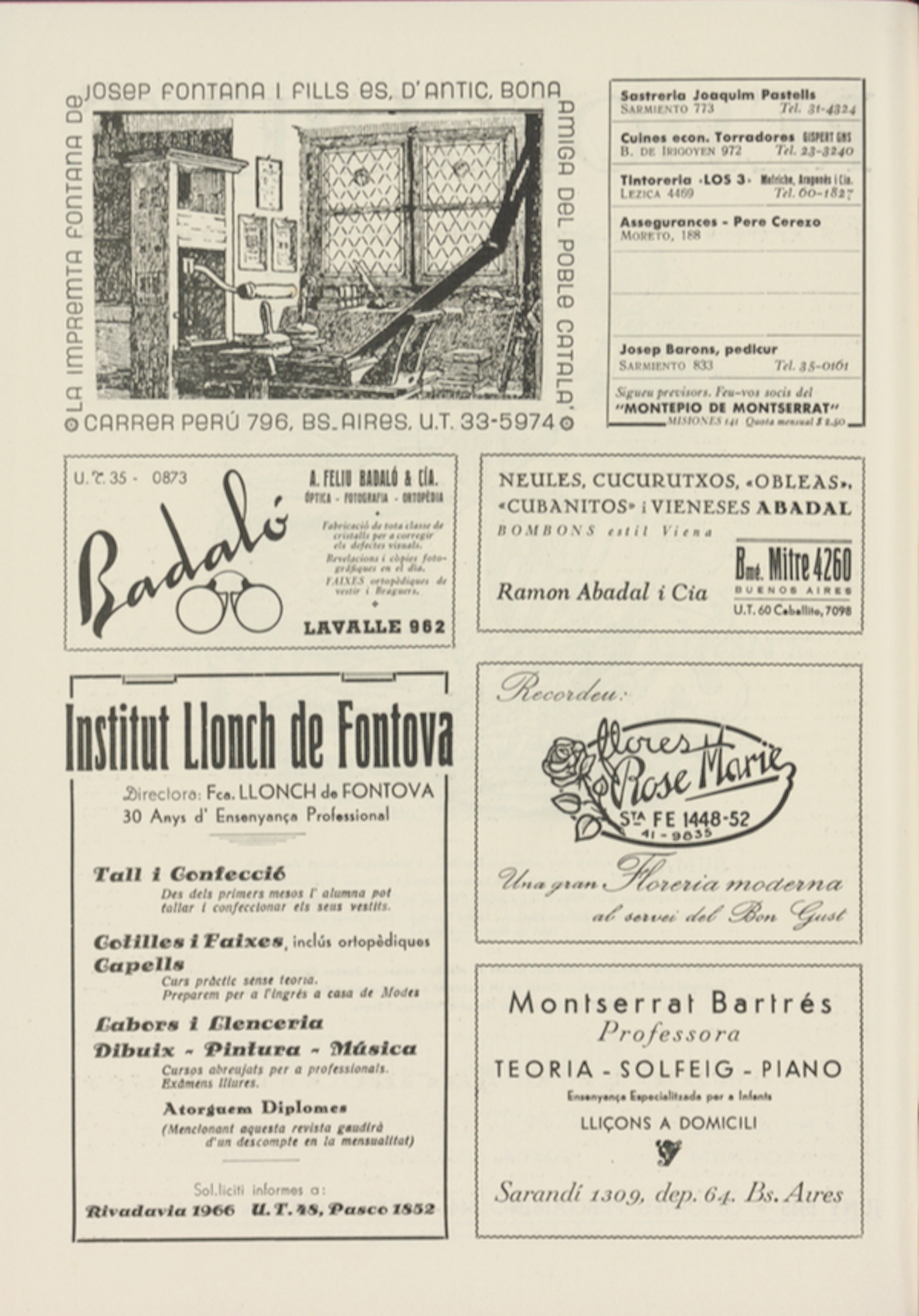Archive
Ressorgiment
- Magazine
- Ressorgiment
- Resurgiment
- Hipòlit Nadal i Mallol
- 1916
- 1972
Pergamino 244, Buenos Aires (editorial office).
- Catalan
32 cm
- Buenos Aires (AR)
One of the most important platforms of Catalan communication was Ressorgiment, a monthly magazine written in Catalan, whose publication spanned the years from 1916 to 1972 and constituted 677 numbers.
Word Count: 27

José Planas Casas, cover of Ressorgiment, no. 347, June 1945. 
Page with Catalan advertisement, Ressorgiment, no. 347, June 1945. Fernández, Alejandro. “La revista Ressorgiment y la colectividad catalana de Buenos Aires (1916–1946).” Revista Internacional de Historia de la Comunicación, no. 12, 2019, pp. 155–177, doi: http://dx.doi.org/10.12795/RiHC.2019.i12.08. Accessed 24 March 2021.
Lucci, Marcela. “La revista ‘Ressorgiment’ en la historia catalana: un proyecto editorial para la difusión del catalanismo político. Buenos Aires: 1916–1936.” Estudios de Historia de España, XVI, 2014, pp. 255–279, https://erevistas.uca.edu.ar/index.php/EHE/article/view/11/0. Accessed 21 April 2021.
Word Count: 74
Biblioteca de Catalunya, Barcelona.
Word Count: 4
- Buenos Aires
- Milena Gallipoli. "Ressorgiment." METROMOD Archive, 2021, https://archive.metromod.net/viewer.p/69/2950/object/5140-11258755, last modified: 12-05-2021.
-
Pompeyo AudivertEngraverIllustratorBuenos Aires
Spanish-born Pompeyo Audivert migrated to Buenos Aires in 1911. He specialized in engraving, mastering its technique to the point of becoming a central figure in the local artistic field.
Word Count: 28